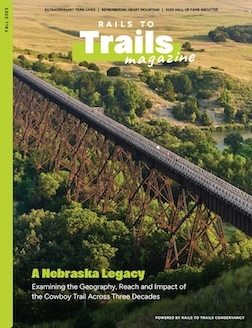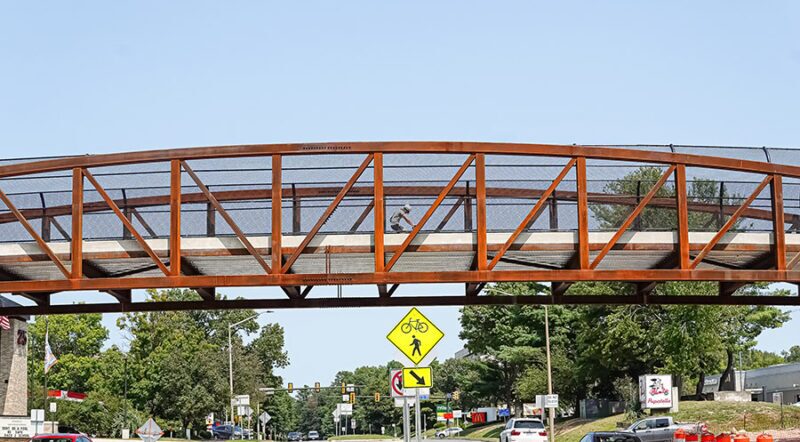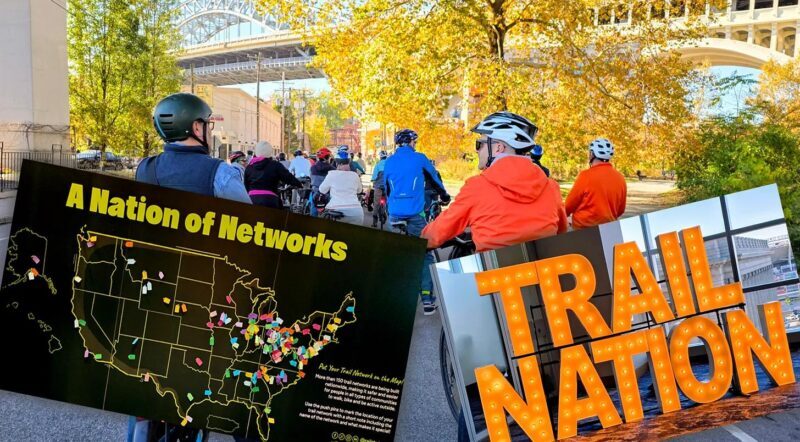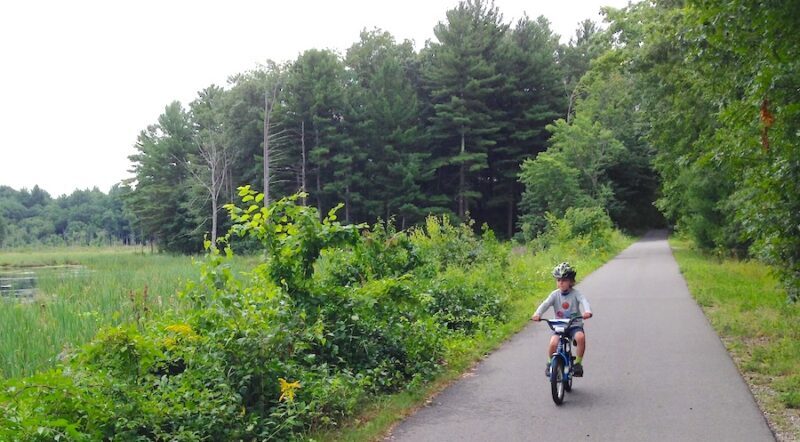A Look at Railbanked Trails Across America
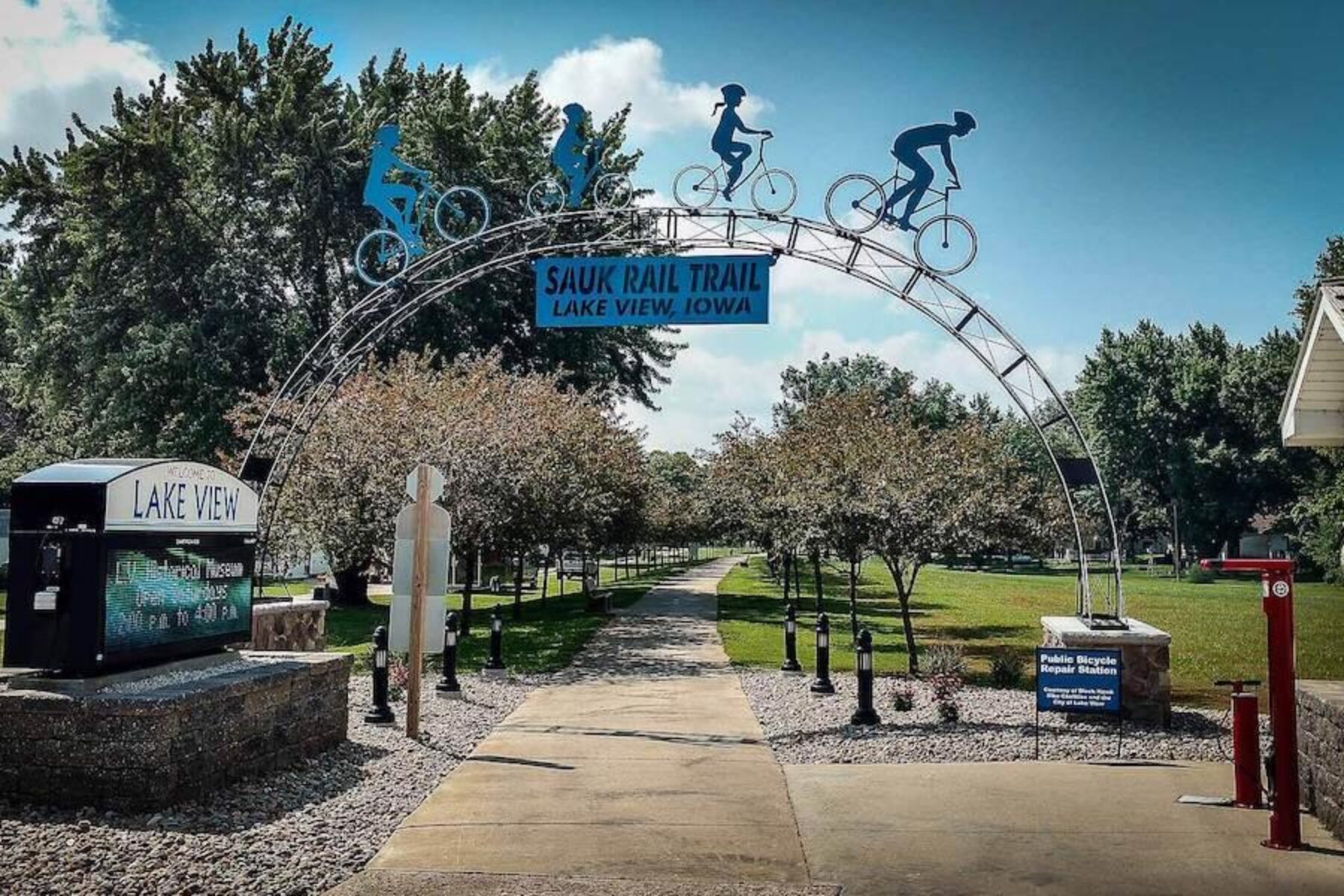
The steady decline of active railway mileage in the United States was turbocharged in 1980 by the deregulation of the railroad industry, which made it easier for railways to discontinue unprofitable routes. Dismayed to see such vital pieces of connective infrastructure disappearing, Congress passed an amendment to the National Trails Systems Act just three years later that enshrined into the law the concept of railbanking—preserving railway corridors in perpetuity, should they ever be needed again.
Under the law signed by President Reagan in 1983, railways could voluntarily give up a disused rail corridor to be reworked into an active transportation pathway for human-powered travel—with the stipulation that it may be converted back to rail use should the need ever arise. The effects have been transformative. Some 4,800 miles of railbanked corridor have been repurposed into 273 rail-trails (and counting). Here are a few notable examples.
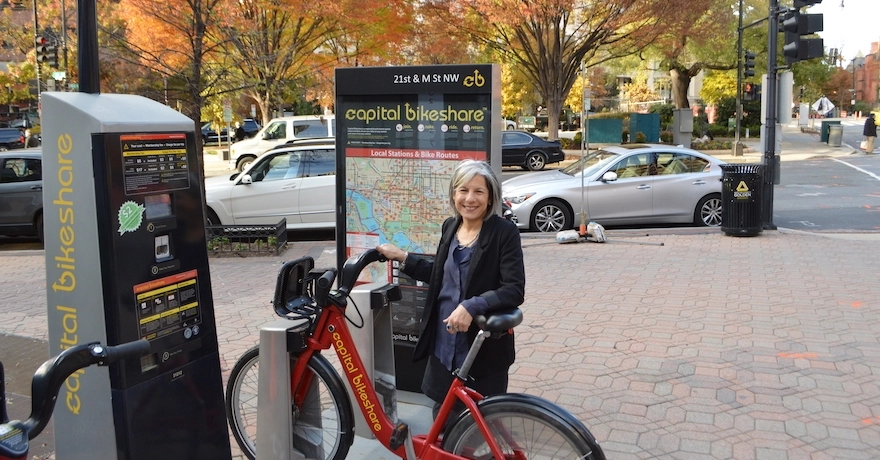
Iowa’s Sauk Rail Trail
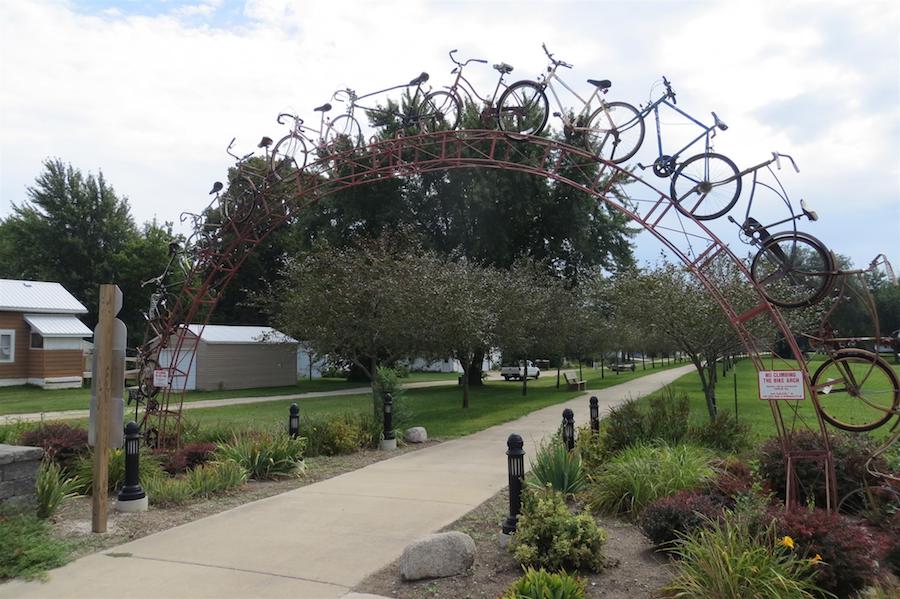
The Sauk Rail Trail in west-central Iowa kicked off what is now 40 years of railbanking just two years after the law was enacted. What started as the country’s first railbanked trail today spans 33 paved miles—built, in part, on a corridor once owned by one of the longest railroads in the United States, the Chicago & North Western Railway.
Bookended by Black Hawk Lake State Park at its northern terminus and Swan Lake State Park at the south end, the trail features a restored 1905 depot in the town of Breda that houses memorabilia from the C&NW.
This article was originally published in the Fall 2025 issue of Rails to Trails magazine and has been reposted here in an edited format. Subscribe to read more articles about remarkable trails while also supporting our work.
Washington’s East Lake Sammamish Trail
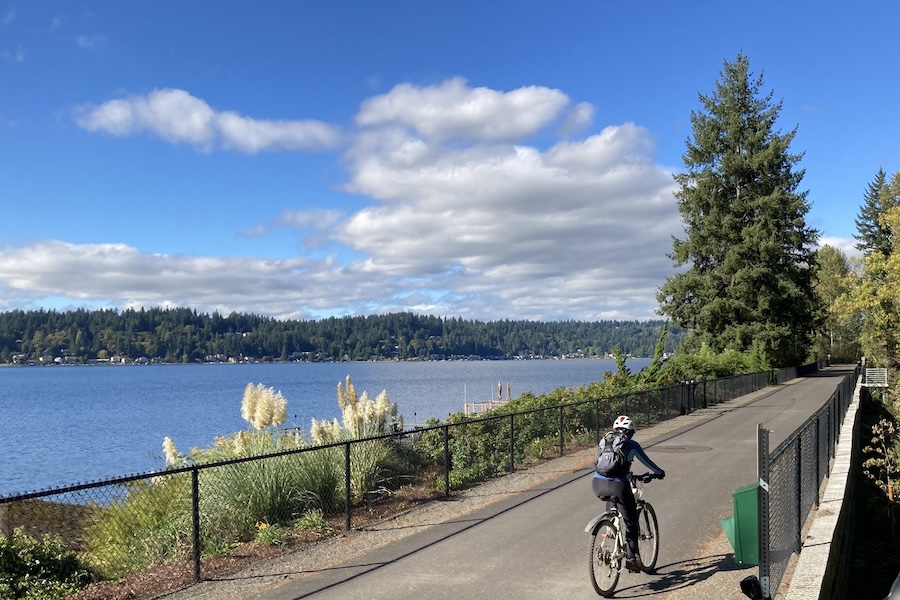
Washington’s East Lake Sammamish Trail was the subject of a court battle that questioned the essential legality of the National Trails System Act regarding railroad easements (Hornish Joint Living Trust, et al. v. King County). Filing a legal brief supporting King County, Rails to Trails Conservancy’s legal team helped secure a victory that affirmed that the full width of the railbanked corridor conveyed to the trail’s managing agency.
The 12-mile paved pathway in Seattle’s fast-growing eastern suburbs serves as an important route for commuters and offers an enjoyable recreational amenity with expansive views of its namesake lake. It’s also a part of the 900-mile Leafline Trails Network developing across the Central Puget Sound region and a segment of the Great American Rail-Trail®, a 3,700-mile route connecting Washington, D.C., and Washington State.
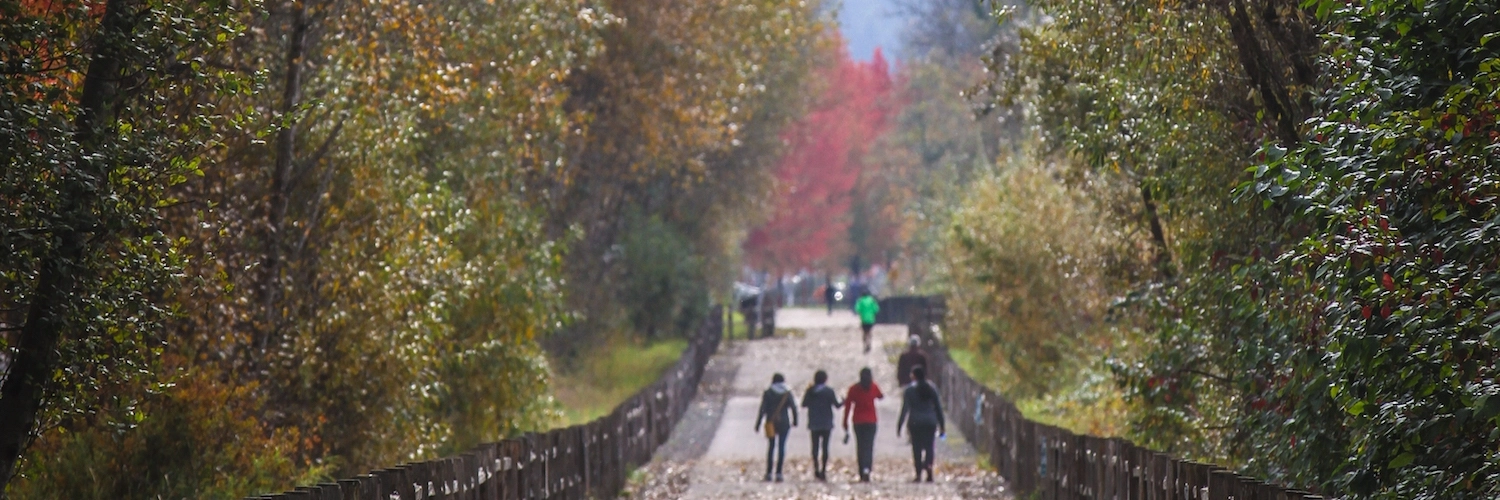
Pennsylvania’s Armstrong Trails
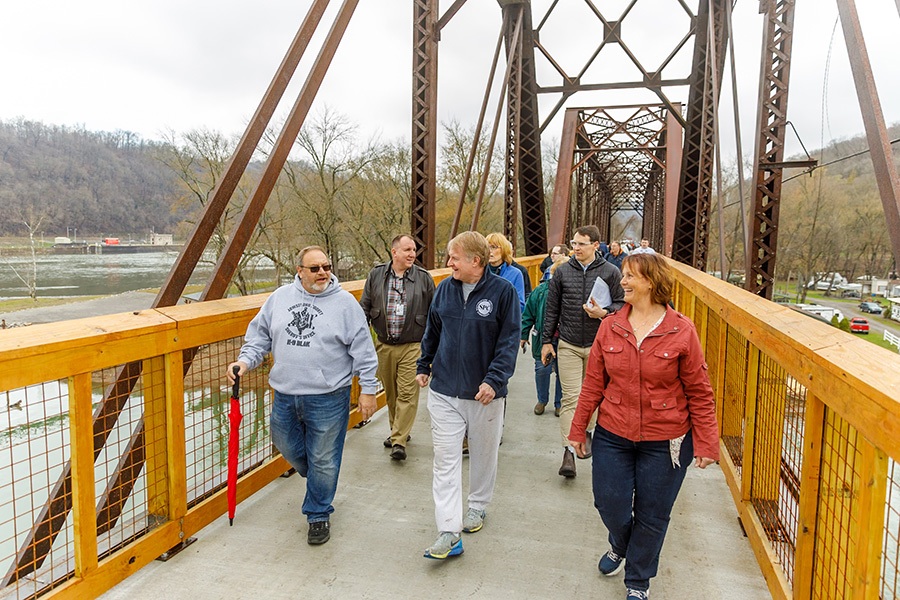
The Allegheny Valley Railroad once supported a booming coal and timber industry across western Pennsylvania, but the trains stopped running in the 1970s. Conrail, the line’s owner in 1992, was open to selling the corridor to the Allegheny Valley Land Trust but was unwilling to formally railbank it with the Surface Transportation Board (STB), the governing body for railbanking. In response, the land trust unilaterally filed the railbanking declaration, along with the deed from Conrail, specifying that the corridor was railbanked directly with the AVLT.
Several landowners adjacent to the line filed suit, believing that absent of STB authority, long-ago property easements granted to the railway should revert back to them. RTC filed a legal brief in support of the trail project. Moody v. Allegheny Valley Land Trust was decided by the Pennsylvania Supreme Court in 1999, where the court momentously agreed with the AVLT that private railbanking was allowed even without action by the STB.
Trailgoers on the Armstrong Trails today can enjoy a 52-mile trip along the eastern bank of the Allegheny River, where they’ll encounter numerous glimpses of the route’s history: the remains of iron furnaces, a coaling tower that was used to refuel steam engines as late as 1957, a locomotive turntable and a half-mile tunnel.
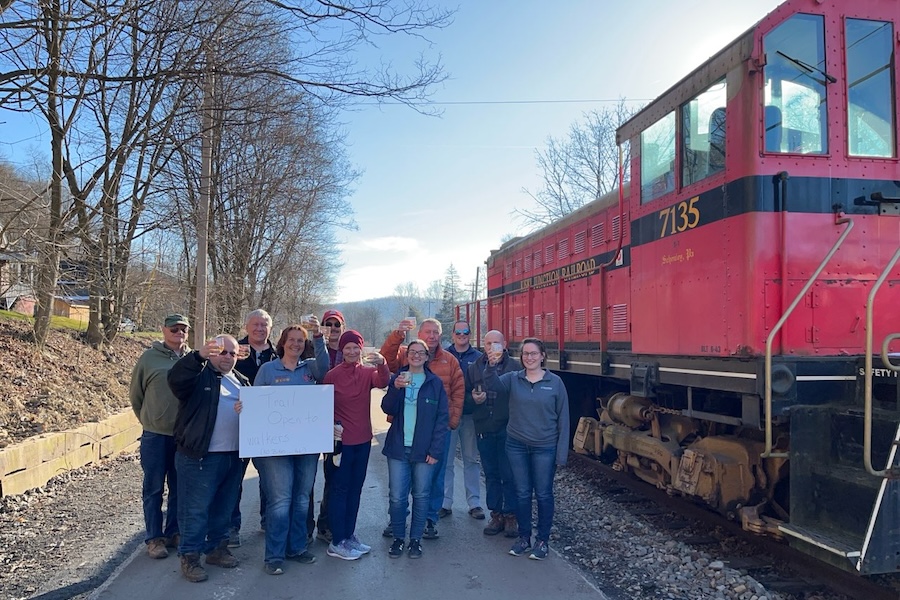
Texas’ A-train Rail Trail

When the Union Pacific railbanked a disused line near Dallas-Fort Worth, the corridor was quickly snatched up by the city of Denton and transformed into the A-train Rail Trail. Not long afterward, the corridor was officially reactivated for rail use when the Denton County Transportation Authority sought to create a commuter line. The expansive width of the corridor allowed the A-train’s tracks to be laid down alongside the bike-and-ped trail, preserving an already beloved community asset.

Missouri’s Frisco Highline Trail
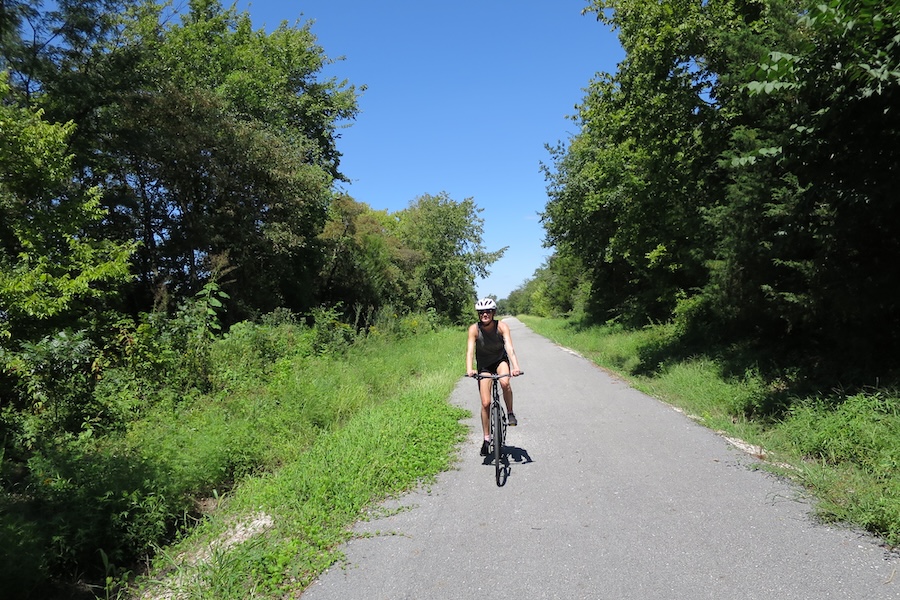
From the rear of his presidential railcar, Harry Truman addressed an assembled crowd in Springfield, Missouri, in the summer of 1948. His impromptu remarks, delivered along the Frisco Highline, were the first instance of his famous whistle-stop campaign. But the history-making status of the Highline wasn’t enough to save it; passenger operations ceased in 1954, and the line’s new owner, Burlington Northern Railroad, filed its intention to railbank 30 miles of the corridor in 1991. A local nonprofit named Ozark Greenways purchased the corridor, offsetting the cost by salvaging and selling the route’s rails and ties.
A 10-mile section of the Frisco Highline Trail opened in 1999, fittingly on National Trails Day, and when Burlington Northern abandoned another section of the line, it was acquired and added to the route. Other additions over the years have extended this scenic pathway through the Ozarks to 37 miles.
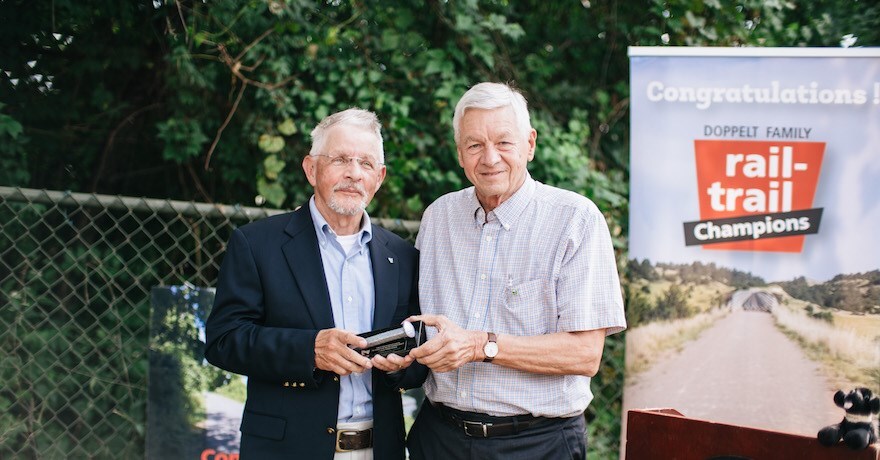
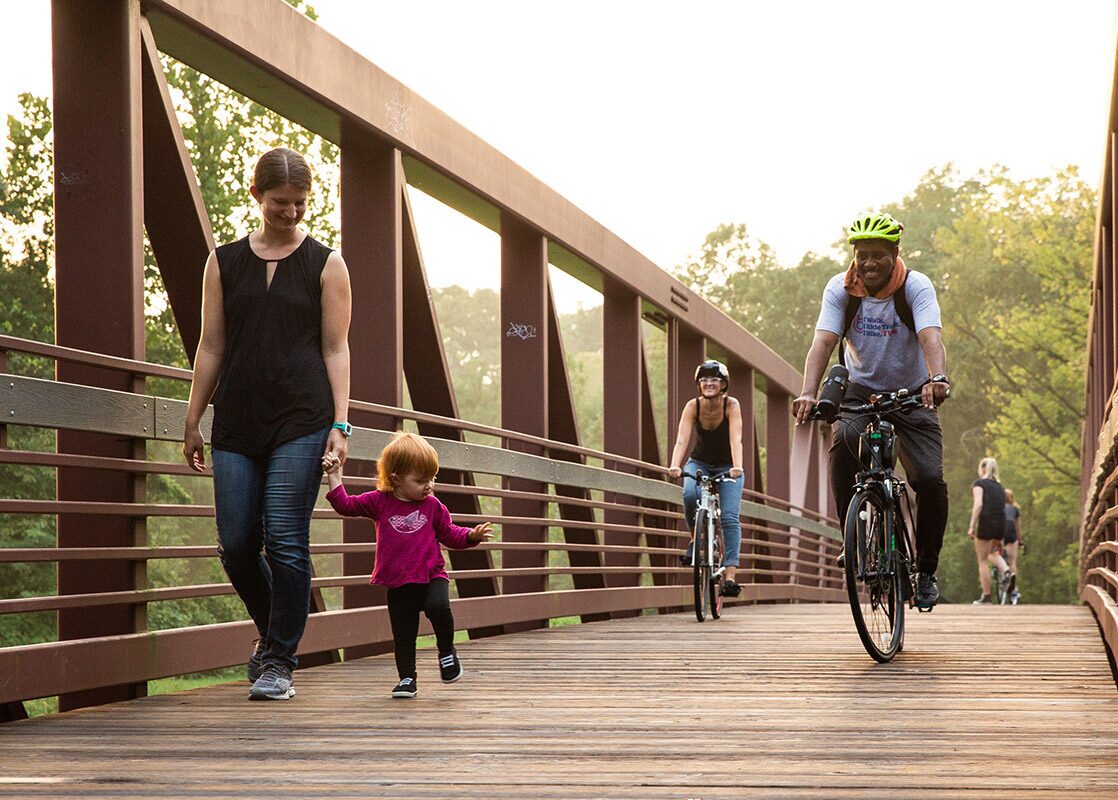
Donate
Everyone deserves access to safe ways to walk, bike, and be active outdoors.
